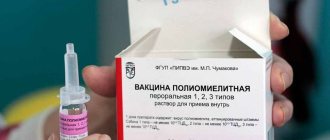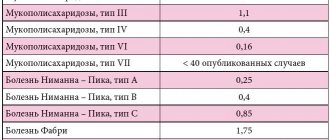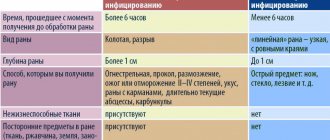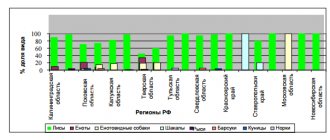Poliomyelitis has always been and remains a serious viral disease, which during its development often leaves irreversible consequences. Activating in the body under certain conditions, the infection affects nerve cells. This leads to the development of varying severity of paralysis. Mostly children are affected, but in the presence of aggravating factors, adults are also susceptible to the disease. Ultimately, polio can result in disability and even death of the patient.
The causative agent is a representative of the intestinal group Poliovirus hominis. It has its own subspecies: strains I, II and III. Statistics say that most suffer from the disease in a mild or asymptomatic form. A pronounced picture with the presence of complications is recorded in 1-1.5% of children, mainly between the ages of six months and five years. From these facts it is clear how important timely vaccination against polio is.
What is the polio vaccine, what is it used for and how does it work?
Multiplying in the body of unvaccinated children and adults, the polio virus enters the nervous system through the blood and affects neurons in the brain or spinal cord and entails serious complications.
To prevent this from happening, a vaccine is administered to such individuals. For the first time it is used in childhood according to a specially prescribed scheme. According to the schedule approved by the Ministry of Health of the Russian Federation, revaccinations follow the first course.
There are two types of polio vaccinations, containing live and killed cultures.
- A live vaccine is a version of a weakened virus culture. Once in the body, it multiplies painlessly and without consequences in the digestive tract, but is not capable of damaging nerve tissue. Due to the entry of an inactive virus (containing a viral antigen), the production of antibodies to it is activated, forming specific humoral and tissue immunity.
As a result of the vaccine, the child's body is completely protected from polio, but for some time he can remain a carrier of the disease and infect children who have not received vaccination.
- “Killed” or inactivated vaccine (IPV). The pathogen is neutralized by treatment with formaldehyde. During the vaccination process, it is administered three times, as a result of which persistent humoral protection is activated.
Polio vaccination is necessary for both children and adults. Vaccination is documented in the relevant orders of the Ministry of Health of the Russian Federation and is carried out in all cities and regions.
Every child in Russia receives the first 2 vaccinations with a “dead” vaccine, and the subsequent revaccinations with OPV.
Adults must be vaccinated with an inactivated vaccine if they are planning a trip to regions unfavorable for the disease.
The danger of polio
The disease is activated by wild poliovirus entering the small intestine.
There it multiplies and is then excreted in feces. The incubation period ends with poliovirus entering the bloodstream. It is capable of affecting neurons in the spinal cord and brain, causing irreversible disorders of motor activity.
A lack of calcium in the body causes weakness of the nerve trunks, which makes it unlikely that normal tissue mobility will return. Refusal to vaccinate, unbalanced diet, weak immunity and the volatility of the virus are the reasons for the increased susceptibility of children to polio.
Today, 3 serotypes of wild poliovirus are known. Type 2 was eliminated in 1999. Type 1 is the most common. Among unvaccinated people, the disease is transmitted extremely quickly, but an outbreak of the epidemic is recorded only with the first case of paralysis. The primary symptoms of infection are similar to ARVI or intestinal infection, since the virus primarily provokes inflammation of the mucous membrane of the nasopharynx and gastrointestinal tract.
Forms of a dangerous and contagious disease
The incubation period of polio (the time from infection to the appearance of the first symptoms) can be up to 35 days. Its duration and signs of poliovirus infection vary, since they depend on the form of polio, determined by the individual characteristics of the body.
Virus carriage means that the virus has not entered the blood, but at the same time it multiplies in the intestines and the person becomes a source of a dangerous infection.
The non-paralytic form is manifested by the following symptoms:
- malaise and loss of appetite;
- runny nose, redness and sore throat;
- frequent, loose stools.
Poliovirus can also cause serous meningitis, a lesion of the lining of the brain. It manifests itself:
- fever;
- headache;
- vomiting;
- tension in the neck muscles, which makes it difficult to move;
- pain in the muscles, their involuntary contractions.
The paralytic form is the most dangerous, sharply manifested by the symptoms described above, lasting 1-3 days. Then they are joined by signs of damage to the nervous system - pain in the limbs and back. After 1-6 days, the temperature subsides and paralysis develops. This can happen over several hours or days.
The danger of polio is that 0.5% of those infected are left with irreversible paralysis of the limbs. Of these, 5-10% may die due to paralysis of the respiratory muscles.
The paralytic period lasts up to 2 weeks, after which the body begins to recover. Complete rehabilitation is rare, but can sometimes occur within 1-2 years. Basically, tissue nutrition remains impaired, the affected limbs are shortened. People who have recovered from the disease acquire lifelong immunity to the strain of the virus they were infected with. Throughout the course of polio, they spread it.
Important: today it is not only wild poliovirus types 1 and 3 that are dangerous. There is also a mutant vaccine virus, from which only immunization can save.
Feasibility of vaccination
Since there is no cure for polio, once infected with the virus, a person can only rely on the strength of his innate immunity. It is very difficult for a child’s body to fight this disease, which is why the risk of disability is high. Repeated vaccination allows a person to acquire lifelong immunity to polio.
Since preschool children are very susceptible to the virus, it is important that each of our fellow citizens under 5 years of age be provided with a vaccine. Completing the full course of immunization ensures the formation of immunity to polio in 95% of vaccinated people
In the video you can see what a person who has contracted the deadly disease looks like, as well as how to protect yourself from contagious polio.
Are vaccinations effective and which one should I choose?
The active use of vaccines contributed to a sharp decrease in the incidence of polio. So, in the 60s it decreased by more than five times, and by the 80s - by 95%. According to research, the introduction of the first three injections already forms immunity in 95% of patients. In the case of one- or two-time vaccination, this figure decreases to an average of 50-85%. Globally, the use of various types of vaccines has led to a 99% reduction in polio cases compared to the “vaccine-free” period.
Despite their effectiveness, different grafting materials have their own advantages and disadvantages. It is divided into drugs for oral and injection use.
Oral polio vaccines.
According to the Global Polio Eradication Program, 4 types of vaccinations have been created: OPV (oral polio vaccine), two monovalent variants: mOPV - 1 and mOPV - 3, and bOPV (bivalent vaccine).
The drug contains a culture of a live, weakened virus and is used in drops. May contain one, two or three strains of the virus, as well as one of the antibiotics to suppress unwanted flora (streptomycin, neomycin or polymycin).
The procedure is carried out by introducing four drops of the product into the mouth, after which the baby should not be fed or given water for an hour after vaccination.
Attention! Since the composition includes an antibacterial agent, in allergic children such an injection in some cases causes sensitization. Before use, you should warn your doctor about this and give an antihistamine.
Parents often ask the question: can the polio vaccine cause the disease? This happens extremely rarely and accounts for 1 case per 1 million vaccinated people. Occurs in situations where children have not previously been vaccinated with IPV.
A person vaccinated with this type of vaccine is a carrier of the virus for two months. He himself does not suffer, but can infect and cause disease in unvaccinated weakened children. If there are any in the family, you should be vaccinated against polio with an inactivated drug.
Inactivated polio vaccine
Vaccination occurs by injecting 0.5 ml of the drug into the hip area for small children and into the shoulder for adults. IPV is produced in France under the name Imovax Polio, and in Belgium – Poliorix.
In Russia, combination vaccines are used: Infanrix Penta, Tetracok, Infanrix Hexa, Pentaxim, Tetraxim.
This vaccine provides lasting immunity, but it is quite painful. In some cases, it causes undesirable local and general effects. When vaccinated with OPV, the baby poses a danger to others.
After weighing all the pros and cons, you should make the best decision. According to the vaccination calendar, these options are combined. The most effective scheme will be when the first and second injections are carried out with IPV, and the subsequent ones with the OPV vaccine. The drawn up schedule is the most acceptable option, which, within the framework of the State program, allows us to avoid the occurrence of vaccine-associated polio.
Vaccination schedule
To protect against polio in Russia, a vaccination sequence has been approved. Its sequence is as follows: first, two injections are given with inactivated drugs, then with a live vaccine. The procedures are carried out on a state basis and are free. However, if the parents wish, and according to existing indications, the vaccination can be replaced with a “killed” vaccine, but in this case it will be paid for.
The polio vaccine is given to children aged three months, four and a half, six months.
Revaccinations: at one and a half years, one year and eight months, fourteen years.
There are times when children or adults require unscheduled immunization. This occurs when traveling to regions where the disease is endemic and unfavorable, and if a monovaccine was previously introduced.
When to vaccinate?
According to the National Vaccination Calendar, the first IPV vaccination is carried out starting from 3 months, the second – at 4.5 months, the 3rd vaccination of the primary vaccination course is given at 6 months with live polio vaccine. Revaccinations against polio are carried out in accordance with the OPV calendar: the first - at 18 months, the second - at 20 months, the third - at 14 years.
When using inactivated polio vaccine in accordance with the instructions for the drug, the first revaccination is carried out 1 year after the third administration of the vaccine. Subsequent revaccination is carried out every 5 years until the patient reaches the age of 18 years and then every 10 years for life.
Contraindications and possible complications
The most serious consequence is infection of children with compromised immunity who received protection from a vaccine with an inactive but viable pathogen. Since the immune system of infants is still imperfect, specific immune protection is achieved through the use of IPV.
Attention! It is prohibited to carry out initial series of vaccinations with OPV drops!
The following are considered contraindications for IPV:
- Acute infectious pathologies;
- chronic infections during exacerbations;
- individual allergic reaction.
Notes The manipulation should be carried out 1 – 2 months after the child’s recovery. If you have an allergy, consultation with a pediatric allergist is indicated.
OPV is contraindicated in the following situations:
- if there is a history of neurological pathology;
- neurological complications were observed during the first vaccination;
- the presence of tumors and immunodeficiencies;
- if the baby has manifestations of an acute infectious disease.
Important! To avoid negative consequences, only healthy children are allowed to be vaccinated after a thorough examination by a doctor and examination.
OPV has virtually no complications, sometimes low-grade fever and allergies occur, and rarely diarrhea, which does not require treatment.
The injectable IPV drug is usually well tolerated, mostly causing a minor local reaction, but other consequences are possible:
- soreness and hyperemia at the injection site;
- swelling of adjacent tissues;
- low-grade fever;
- lethargy and drowsiness;
- irritability;
- rarely - a general reaction of the body with seizures or anaphylaxis.
More than thirty years have passed since, thanks to immunization, polio ceased to be endemicly dangerous in the Russian Federation. When preparing their child for such a procedure, parents should study the pros and cons of vaccines. Of course, clinics use domestic drugs free of charge. Their foreign analogues may in some ways be superior to them in terms of cleaning quality and cause less negative effects. You must pay for their introduction. Which means to choose is up to you.
Side effects of immunization
As a result of clinical studies, doctors were able to confirm that children usually tolerate immunization that prevents polio. Therefore, on the day of vaccination, you can take a walk with your child, take water treatments and do other things according to your daily routine.
Side effects of vaccination are rare and most often take the following form:
- unexpressed digestive disorders, in particular, unformed stools, frequent urge to go to the toilet for 1-3 days;
- rashes of allergic origin that go away on their own without additional drug intervention;
- temporary nausea (possibly one-time vomiting without disturbing the general condition of the baby).
An increase in body temperature is not typical for the post-vaccination period. Therefore, the appearance of such symptoms should be associated with other causative factors.
Do I need to be vaccinated against polio infection? Naturally, pediatricians insist on immunization of all children who have no contraindications to the procedure, but the last word should always remain with the parents of the little tomboy. When making a final decision, it should be taken into account that vaccinating children around the world has made it possible to minimize episodes of such a dangerous disease as polio, and has made it possible to prevent outbreaks of epidemics in different parts of our planet.
Reviews about vaccinations
- Valeria, 24 years old.
This is my first child, very dear and desired. He was born healthy and is growing to the delight of my husband and I and our grandparents. We were very worried. I was afraid of the consequences - I read a lot about allergies, swelling and everything else. The doctor spoke about a possible rise in temperature. And so it happened: in the evening I developed a low-grade fever, and my son was a little naughty. However, the next morning all the symptoms disappeared. Subsequently, the injection was reminded of the injection for some time by a slight redness around the injection site, which disappeared without a trace after a week.
- Miroslava, 35 years old.
I have two children: a boy of six years old and a girl, still quite a baby: she is already six months old. Son Anton is growing up as a strong and healthy boy; all vaccinations were done according to schedule. I don't remember having any reaction to the polio vaccine. From the injection, I remember the temperature rose slightly, which my son did not even notice. The baby is already past two vaccinations, which we bravely endured, screaming a little. In the evening the temperature rose to 37.4, but it went away without treatment. At six months we were already given drops. I didn't notice anything bad at all.
- Oksana, 30 years old.
My son was born premature. Despite this, he began to gain weight normally, and by the time of the first vaccination he had almost caught up with his peers. The doctor said that vaccination is simply necessary, this technique will protect the baby from a terrible disease. Moreover, there are currently no contraindications. They convinced me that the Imovax vaccine is purified and has minimal side effects.
Everyone was very worried. But, surprisingly, my son suffered from the polio virus very easily and without consequences. Except that in the evening he was a little capricious. The morning after the vaccination we saw a “prick” reaction.
Post-vaccination reactions
There is practically no reaction to the introduction of a live vaccine. In extremely rare cases, a slight increase in body temperature is possible 5-14 days after vaccination. In young children, a slight increase in bowel movements may occur, which lasts 1-2 days and goes away on its own without treatment. After administration of an inactivated vaccine, in a small percentage of cases there may be local reactions in the form of swelling and redness. Very rarely, a general reaction may occur in the form of a slight rise in body temperature, anxiety of the child on the first or second day after vaccination, which soon disappear.










